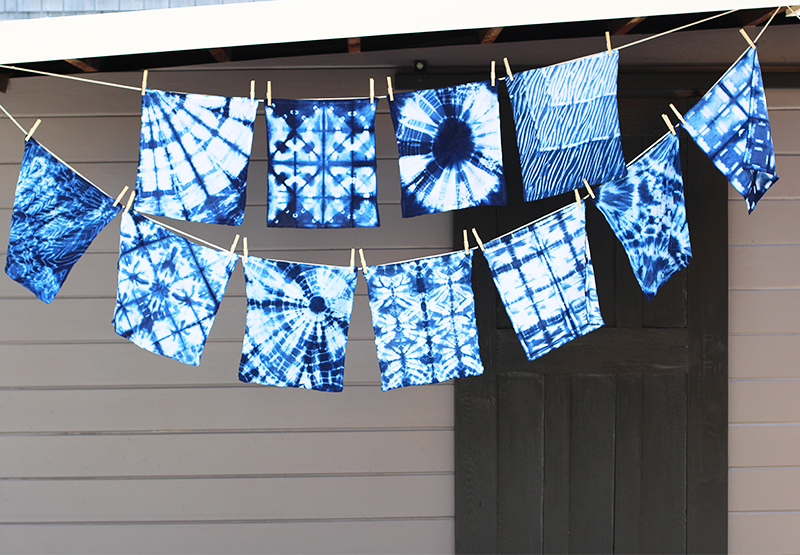
You’ll need:
- an indigo dye kit
- natural fiber clothing or fabric
- 2 5 gallon buckets
- rubber gloves
- small wood squares
- rubber bands
- twine
- a PVC pipe
- a long wooden stick
- a drop cloth
- rubber gloves

When choosing fabric or clothing, it’s important that made of natural fibers. Cotton, wool, silk or linen work best. I also like to pre-wash my fabric before dyeing. Here I’m using rectangular dinner napkins but obviously, any shape or article of clothing will do! Here are just a few basic binding techniques to try:
Itajime shibori is known as the shape-resist technique. To start, fold the fabric like an accordion.
 Fold it again in the other direction – again, like an accordion. Place it between two pieces of wood, or any flat shaped object, and bind it together with string or rubber bands. The shapes and rubber bands will prevent the dye from penetrating the fabric they cover. The larger the shape and the more rubber bands you use, the more white you will see. The smaller the shape and fewer rubber bands you use, the more indigo you will see.
Fold it again in the other direction – again, like an accordion. Place it between two pieces of wood, or any flat shaped object, and bind it together with string or rubber bands. The shapes and rubber bands will prevent the dye from penetrating the fabric they cover. The larger the shape and the more rubber bands you use, the more white you will see. The smaller the shape and fewer rubber bands you use, the more indigo you will see. Arashi is the Japanese term for “storm” and it’s also known as the pole-wrapping technique. It starts by wrapping fabric around a plastic PVC pipe at a diagonal. Once the fabric is wrapped, tie a piece of twine into a double knot at the base of the pipe.
Arashi is the Japanese term for “storm” and it’s also known as the pole-wrapping technique. It starts by wrapping fabric around a plastic PVC pipe at a diagonal. Once the fabric is wrapped, tie a piece of twine into a double knot at the base of the pipe.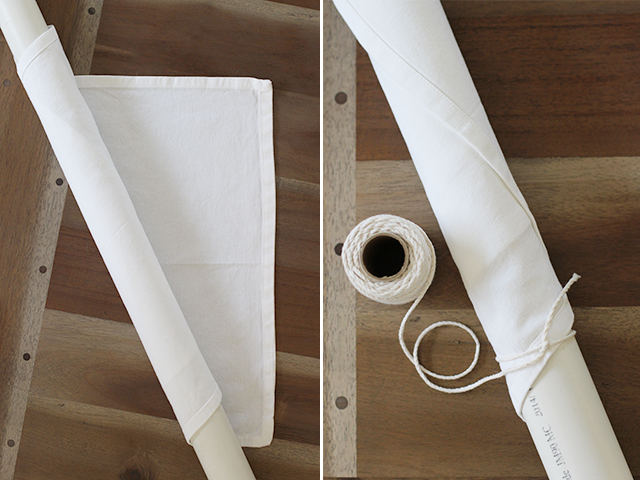 Wrap the twine around the fabric. After 6-7 wraps around the pipe, scrunch the fabric down. Give the twine a strong tug to tighten. Tightening before scrunching will make it more difficult to control and move the fabric.
Wrap the twine around the fabric. After 6-7 wraps around the pipe, scrunch the fabric down. Give the twine a strong tug to tighten. Tightening before scrunching will make it more difficult to control and move the fabric.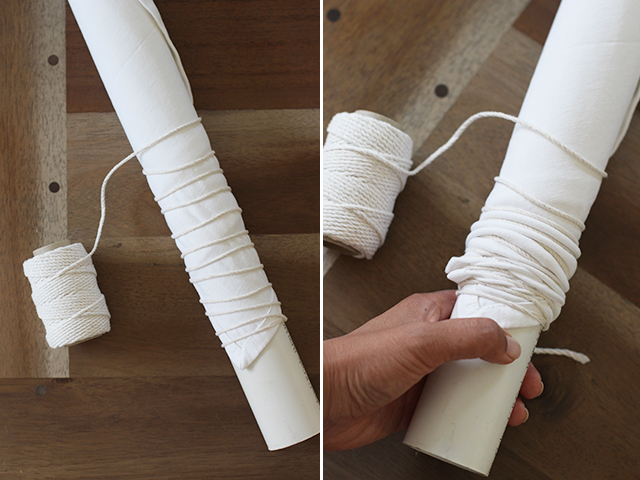 Continue wrapping, scrunching and tightening until all the fabric is compacted. Tie a knot above the fabric. The pattern will be on a diagonal with thin lines of white, where the twine is binding the fabric.
Continue wrapping, scrunching and tightening until all the fabric is compacted. Tie a knot above the fabric. The pattern will be on a diagonal with thin lines of white, where the twine is binding the fabric. Kumo shibori is known as the pleat and bind technique. It involves binding the fabric in very close sections, which results in several spider like designs. This is just one of many ways to experiment with this technique. Start by folding the fabric into an accordion. Pinch and bind into equal sections.
Kumo shibori is known as the pleat and bind technique. It involves binding the fabric in very close sections, which results in several spider like designs. This is just one of many ways to experiment with this technique. Start by folding the fabric into an accordion. Pinch and bind into equal sections.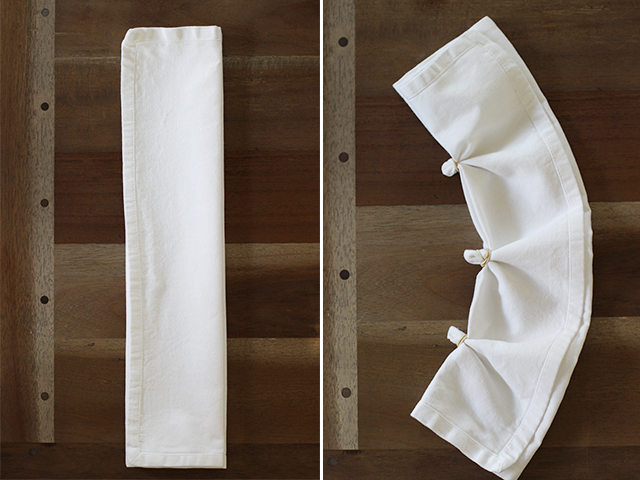 Do the same with the opposite side, in staggered sections. Continue binding with rubber bands, working your way towards the center.
Do the same with the opposite side, in staggered sections. Continue binding with rubber bands, working your way towards the center.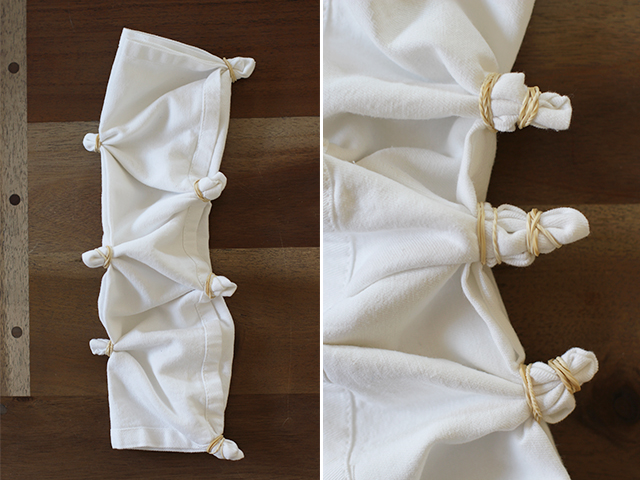 Keep binding until you can’t go any further. Add additional rubber bands to make the fabric into a tight bundle.
Keep binding until you can’t go any further. Add additional rubber bands to make the fabric into a tight bundle.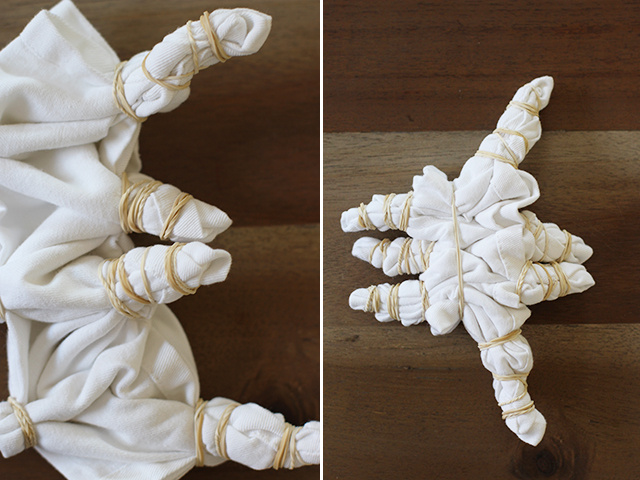 Be resourceful when binding – use clamps, paper clips, binder clips, odd shaped wooden pieces, canning jar lids, etc. There is no right or wrong way to shibori!
Be resourceful when binding – use clamps, paper clips, binder clips, odd shaped wooden pieces, canning jar lids, etc. There is no right or wrong way to shibori! To set up the indigo dye vat, follow the accompanying dye kit instructions. For this particular kit, start by filling a 5 gallon bucket with 4 gallons of warm water. Pour the indigo dye powder into the bucket and stir in a circular motion.
To set up the indigo dye vat, follow the accompanying dye kit instructions. For this particular kit, start by filling a 5 gallon bucket with 4 gallons of warm water. Pour the indigo dye powder into the bucket and stir in a circular motion.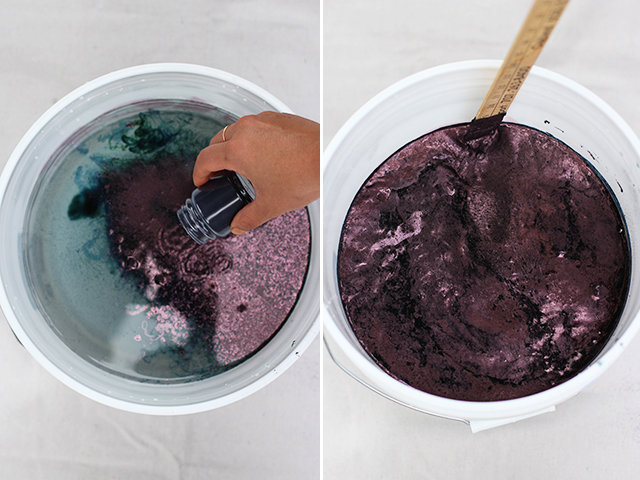 Then pour in the soda ash and reduction agent. Stir again in a circular motion and then in reverse. It is important not to oxidize the dye bath so keeping it covered and stirring it gently is recommended. Once the dyed is well mixed, cover for at least an hour. When you check on the dye, you’ll notice a foamy oil-slick looking top layer and a neon yellow-greenish colored liquid below. This is when you know the dye is ready.
Then pour in the soda ash and reduction agent. Stir again in a circular motion and then in reverse. It is important not to oxidize the dye bath so keeping it covered and stirring it gently is recommended. Once the dyed is well mixed, cover for at least an hour. When you check on the dye, you’ll notice a foamy oil-slick looking top layer and a neon yellow-greenish colored liquid below. This is when you know the dye is ready.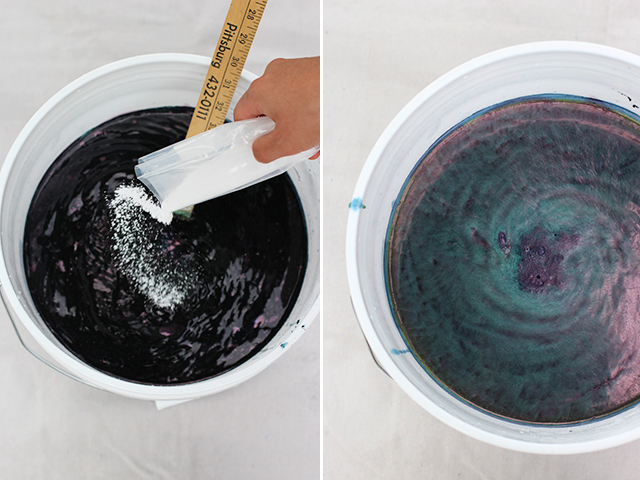 Rinse the fabric in another bucket of clean water. Squeeze out all the water before submerging it into the indigo dye bath. Gently manipulate and massage the dye into the fabric. Again, try not to agitate the dye by working gently under the surface of the dye.
Rinse the fabric in another bucket of clean water. Squeeze out all the water before submerging it into the indigo dye bath. Gently manipulate and massage the dye into the fabric. Again, try not to agitate the dye by working gently under the surface of the dye. After about 5 minutes, take the fabric out of the dye. It will have a green hue but after several minutes, as it is exposed to oxygen, it will turn dark blue. Carefully peek inside one of your pieces and you’ll see the areas in which the dye wasn’t able to penetrate. Lookin’ good!
After about 5 minutes, take the fabric out of the dye. It will have a green hue but after several minutes, as it is exposed to oxygen, it will turn dark blue. Carefully peek inside one of your pieces and you’ll see the areas in which the dye wasn’t able to penetrate. Lookin’ good!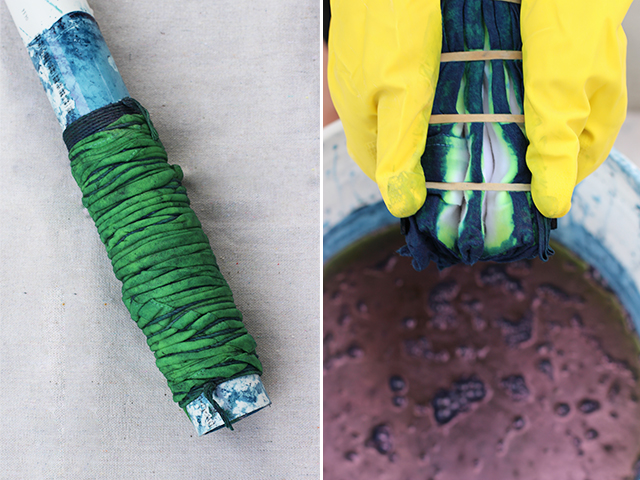 After all the pieces have been dyed and allowed to oxidize, go ahead and repeat the dying process. The more it goes into the dye bath, the darker the indigo hue the fabric will be. And remember, the fabric will always look darker when wet and will fade a bit when washed for the first time.
After all the pieces have been dyed and allowed to oxidize, go ahead and repeat the dying process. The more it goes into the dye bath, the darker the indigo hue the fabric will be. And remember, the fabric will always look darker when wet and will fade a bit when washed for the first time.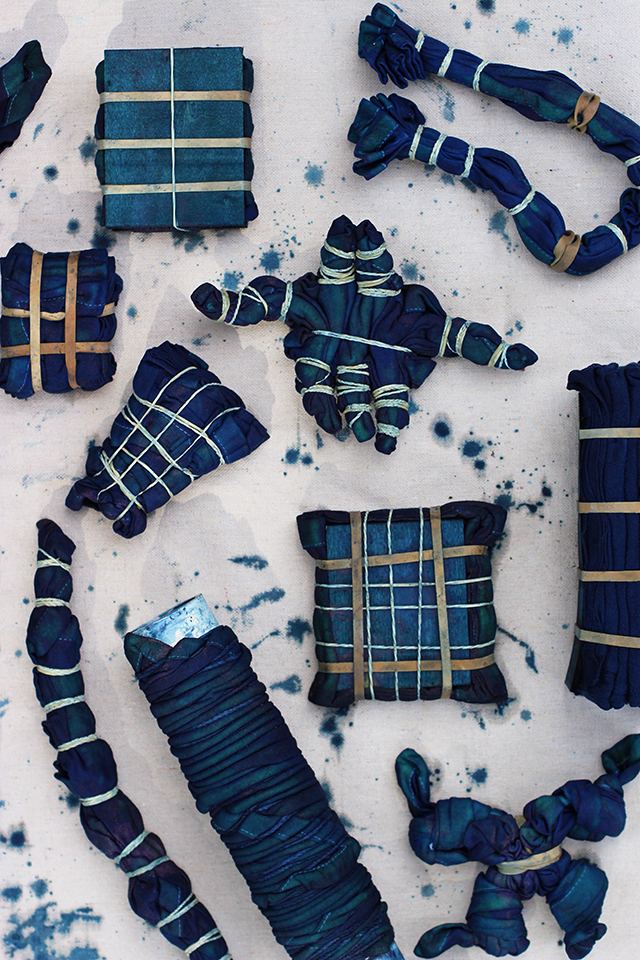 After dyeing, allow the pieces to dry and set. I like to leave them overnight before unwrapping the pieces. Put on a fresh pair of gloves, grab a pair of scissors and keep that bucket of clean water nearby. Give the bound pieces a good rinse in water and then carefully snip away the rubber bands and twine. First up is the shape resist technique. See how the fabric is gridded with striped lines from the rubber bands? My wooden squares weren’t able to exclude the dye completely and I love it! That is the beauty of shibori – there are no mistakes.
After dyeing, allow the pieces to dry and set. I like to leave them overnight before unwrapping the pieces. Put on a fresh pair of gloves, grab a pair of scissors and keep that bucket of clean water nearby. Give the bound pieces a good rinse in water and then carefully snip away the rubber bands and twine. First up is the shape resist technique. See how the fabric is gridded with striped lines from the rubber bands? My wooden squares weren’t able to exclude the dye completely and I love it! That is the beauty of shibori – there are no mistakes.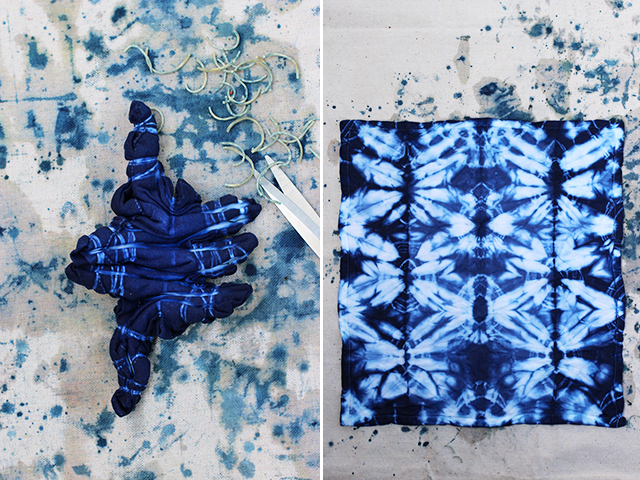 Now for the pleated and bound resist technique . . .
Now for the pleated and bound resist technique . . .
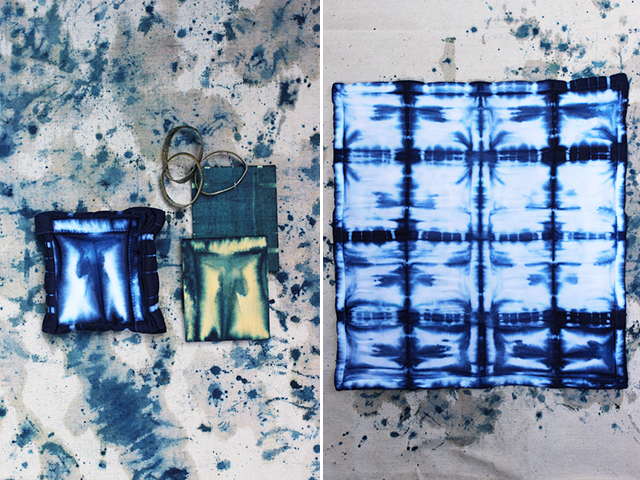 And the pole tying technique . . .
And the pole tying technique . . .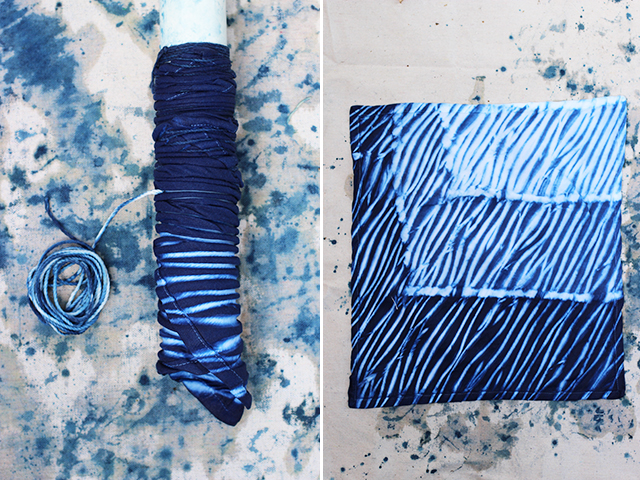 I used binder clips here to bind a square accordion fold.
I used binder clips here to bind a square accordion fold. Here, I simply knotted all four corners of the fabric individually.
Here, I simply knotted all four corners of the fabric individually. And then there is the good ol’ binding method we all did in grade school.
And then there is the good ol’ binding method we all did in grade school.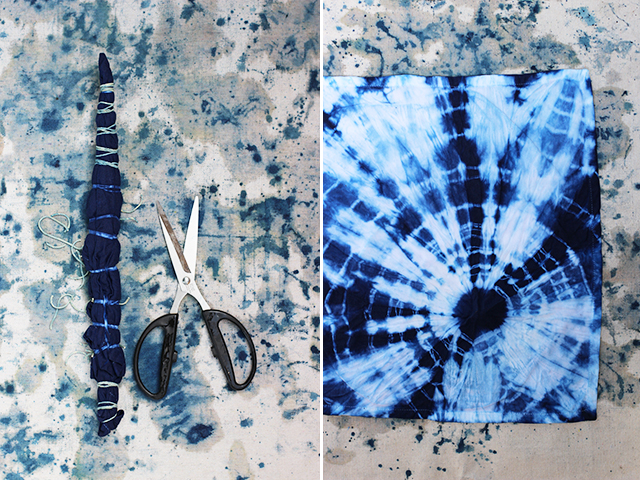 Once all the pieces have been unwrapped, wash them in the washing machine with cold water without detergent. Line dry, or dry on the lowest heat setting in a dryer, and iron to set the color.
Once all the pieces have been unwrapped, wash them in the washing machine with cold water without detergent. Line dry, or dry on the lowest heat setting in a dryer, and iron to set the color.
The dye vat should allow you to dye at least 5 pounds of fabric. If you keep it covered after each use, it should last up to 5 days. Have fun!
 (images by HonestlyWTF)
(images by HonestlyWTF)
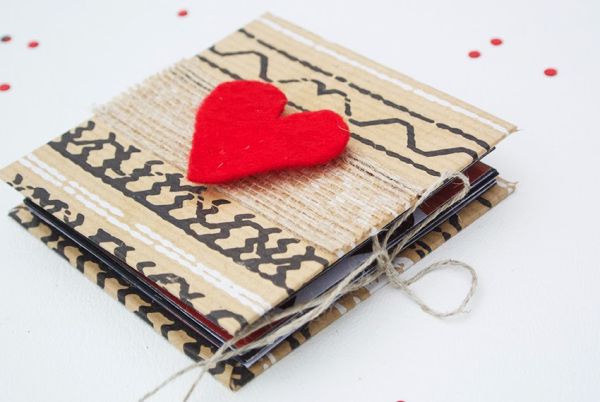
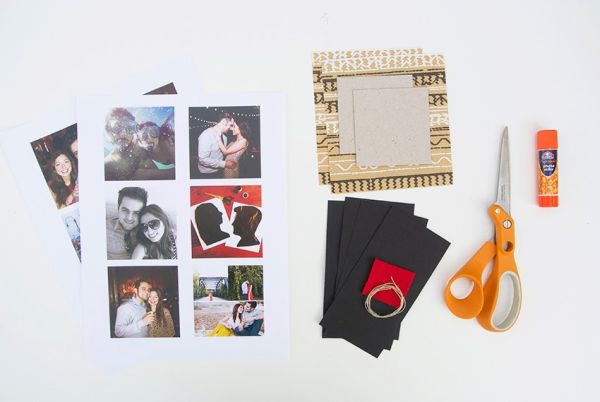 Then, separate all the photos that you will use in your handicraft and cut strips with the size of these photos on paper that will stay in the inner part of the album. Fold the strips in half and paste as many strips as necessary to accommodate all the photos you choose.
Then, separate all the photos that you will use in your handicraft and cut strips with the size of these photos on paper that will stay in the inner part of the album. Fold the strips in half and paste as many strips as necessary to accommodate all the photos you choose.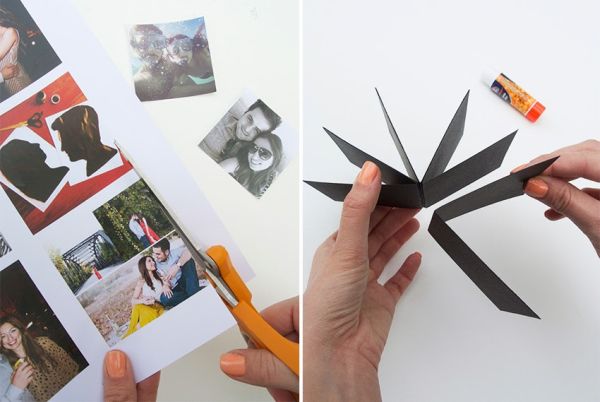 Afterwards, paste the photos on the inside sheets, with the help of glue stick. Coat two squares of cardboard, which should be a size a little larger than the size of the album sheets.
Afterwards, paste the photos on the inside sheets, with the help of glue stick. Coat two squares of cardboard, which should be a size a little larger than the size of the album sheets.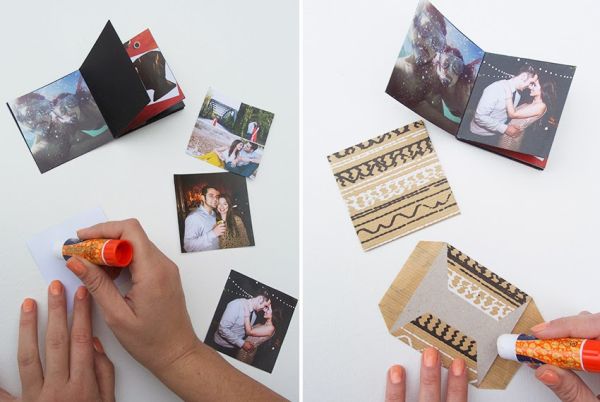 Now attach a piece of string, yarn, or string of your choice with pieces of tape on both the front and back covers of your mini album.
Now attach a piece of string, yarn, or string of your choice with pieces of tape on both the front and back covers of your mini album. Then, to finish off your piece, paste the cover and back cover that you just created and decorate the cover of your mini album with the materials you want to use. And it’s ready!
Then, to finish off your piece, paste the cover and back cover that you just created and decorate the cover of your mini album with the materials you want to use. And it’s ready!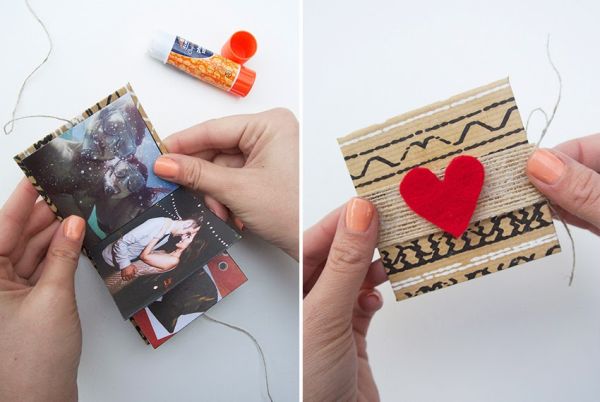
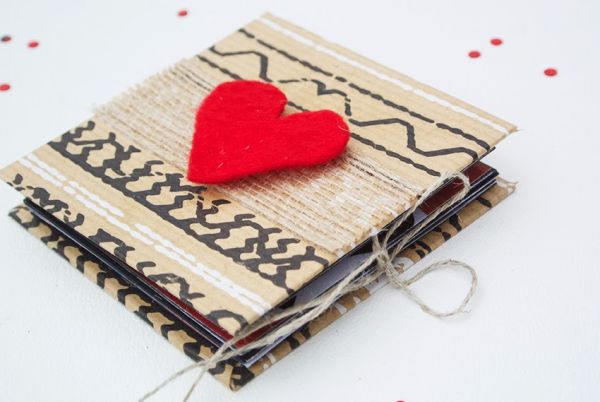 (Photo: cremedelacraft.com)
(Photo: cremedelacraft.com)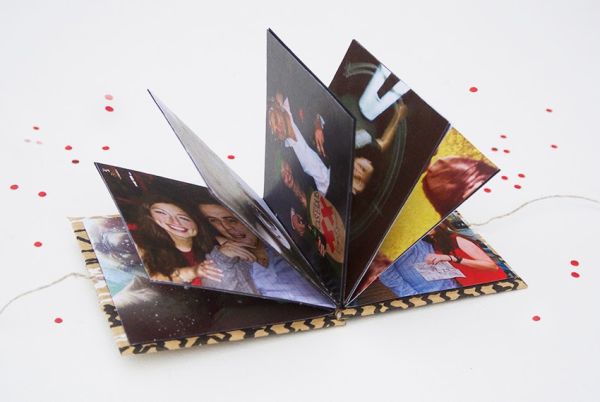


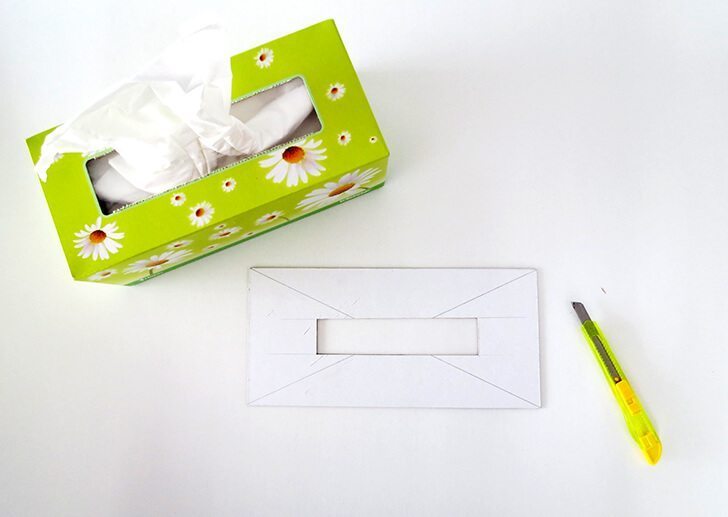 Measure, scratch and also trim the sides of the tissue box. Also with a little leftover for this part assembled by you to fit in the tissue box.
Measure, scratch and also trim the sides of the tissue box. Also with a little leftover for this part assembled by you to fit in the tissue box.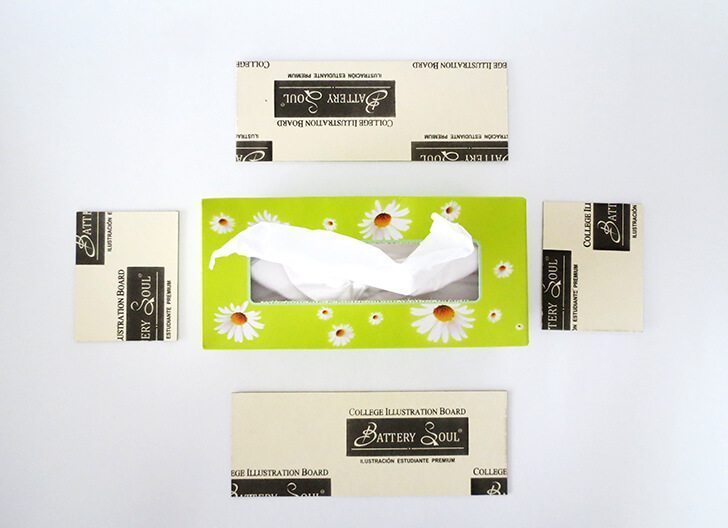 Mount your carton with the aid of a piece of adhesive tape being positioned inside and out of the carton.
Mount your carton with the aid of a piece of adhesive tape being positioned inside and out of the carton.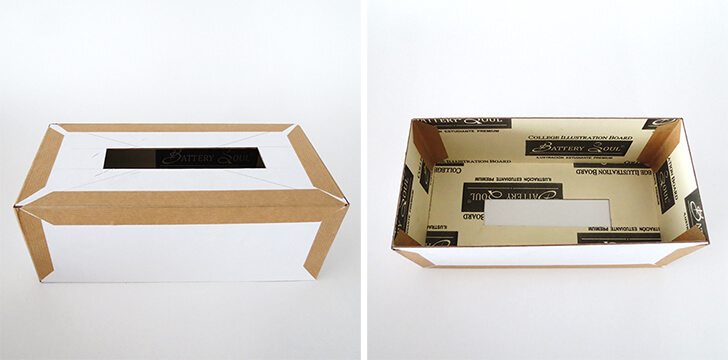 Cut a piece of textured paper to the top of your carton.
Cut a piece of textured paper to the top of your carton.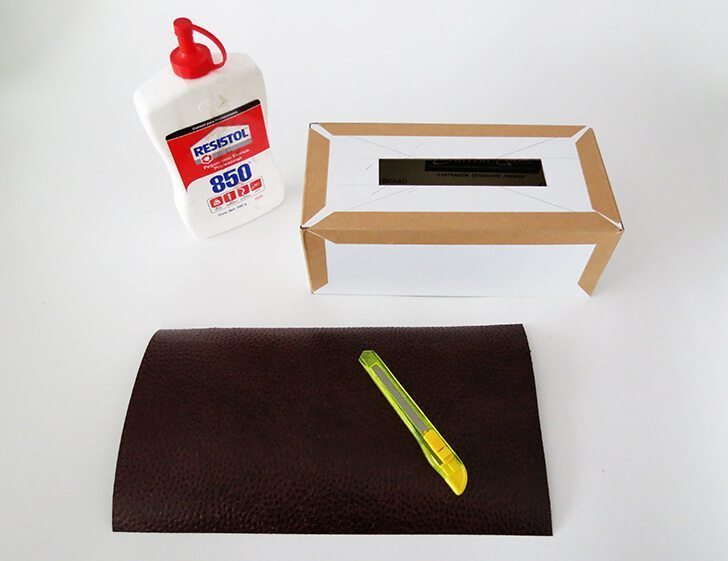 Cut the corners and position on the box.
Cut the corners and position on the box.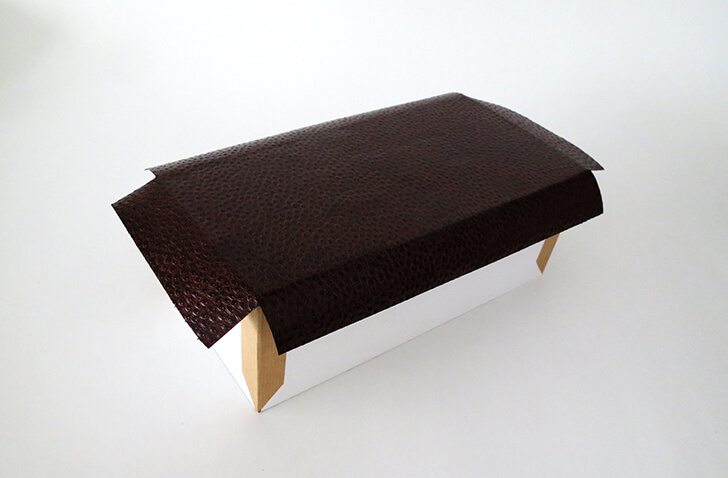 Cut the inside of the opening and turn the paper envelope in, pasting them.
Cut the inside of the opening and turn the paper envelope in, pasting them.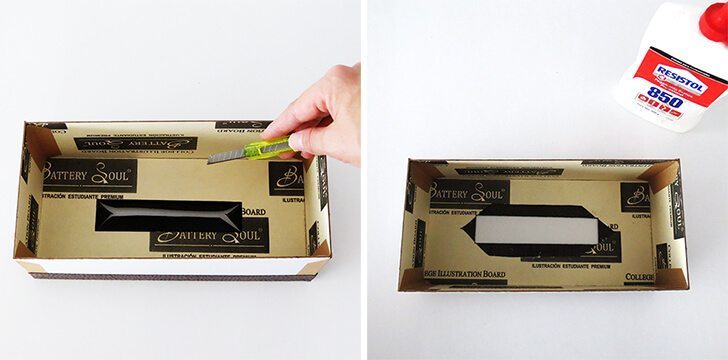 Cut and glue the sides.
Cut and glue the sides.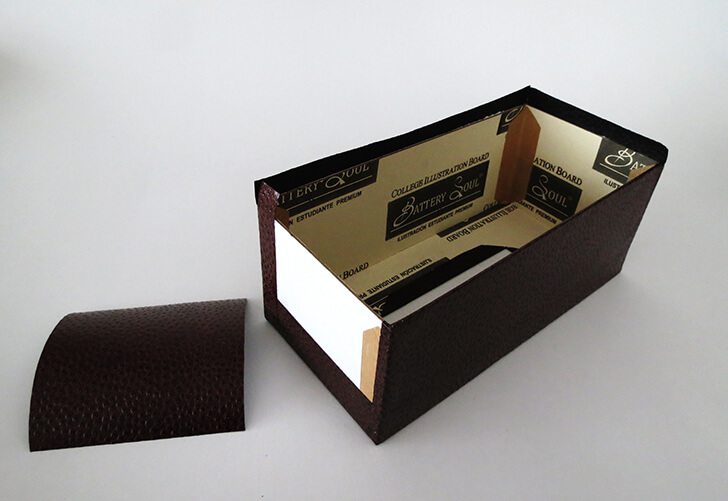 Cut the cat’s tail, muzzle and ears into the papers. Also cut the whiskers and eyes on the waxed wire.
Cut the cat’s tail, muzzle and ears into the papers. Also cut the whiskers and eyes on the waxed wire. Glue the inside of the ear, cut and fold the base, curving it, and glue it to one end of the box.
Glue the inside of the ear, cut and fold the base, curving it, and glue it to one end of the box. To finalize your piece, glue the eyes, whiskers, muzzle and tail of the kitten. And it’s ready! Because this piece is removable, whenever the tissue box is finished you can remove the part of the kitten from above and position it in another tissue box.
To finalize your piece, glue the eyes, whiskers, muzzle and tail of the kitten. And it’s ready! Because this piece is removable, whenever the tissue box is finished you can remove the part of the kitten from above and position it in another tissue box.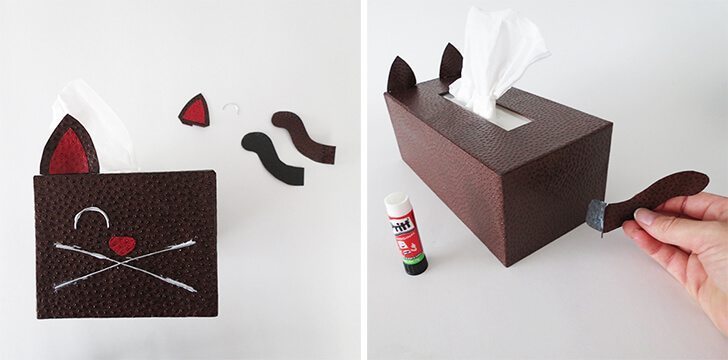
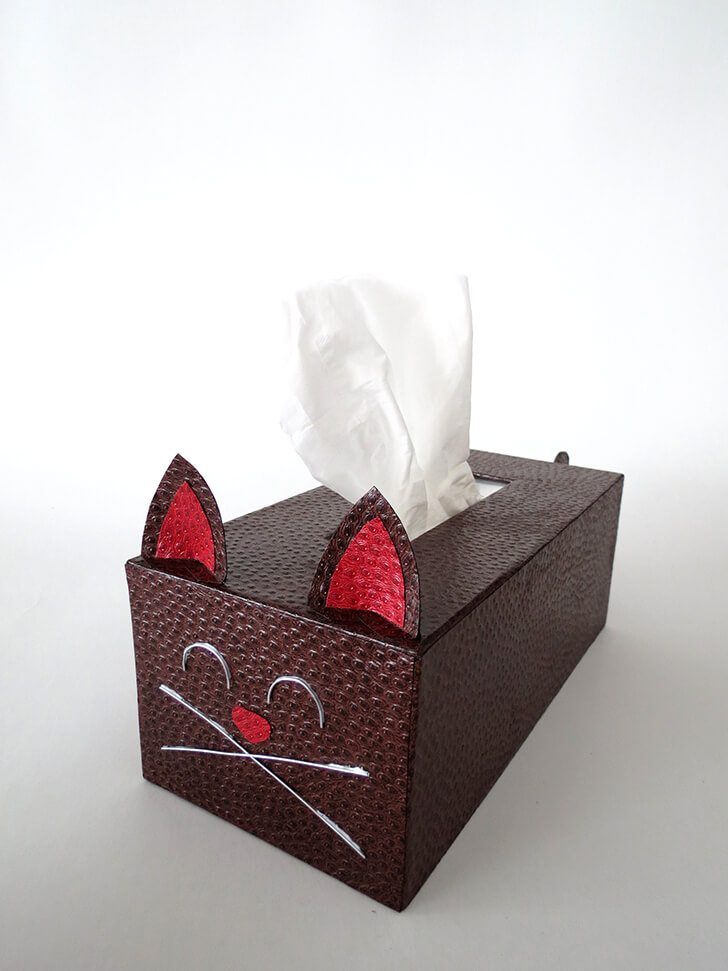 (Photo: dreamalittlebigger.com)
(Photo: dreamalittlebigger.com)


 Fold it again in the other direction – again, like an accordion. Place it between two pieces of wood, or any flat shaped object, and bind it together with string or rubber bands. The shapes and rubber bands will prevent the dye from penetrating the fabric they cover. The larger the shape and the more rubber bands you use, the more white you will see. The smaller the shape and fewer rubber bands you use, the more indigo you will see.
Fold it again in the other direction – again, like an accordion. Place it between two pieces of wood, or any flat shaped object, and bind it together with string or rubber bands. The shapes and rubber bands will prevent the dye from penetrating the fabric they cover. The larger the shape and the more rubber bands you use, the more white you will see. The smaller the shape and fewer rubber bands you use, the more indigo you will see. Arashi is the Japanese term for “storm” and it’s also known as the pole-wrapping technique. It starts by wrapping fabric around a plastic PVC pipe at a diagonal. Once the fabric is wrapped, tie a piece of twine into a double knot at the base of the pipe.
Arashi is the Japanese term for “storm” and it’s also known as the pole-wrapping technique. It starts by wrapping fabric around a plastic PVC pipe at a diagonal. Once the fabric is wrapped, tie a piece of twine into a double knot at the base of the pipe. Wrap the twine around the fabric. After 6-7 wraps around the pipe, scrunch the fabric down. Give the twine a strong tug to tighten. Tightening before scrunching will make it more difficult to control and move the fabric.
Wrap the twine around the fabric. After 6-7 wraps around the pipe, scrunch the fabric down. Give the twine a strong tug to tighten. Tightening before scrunching will make it more difficult to control and move the fabric. Continue wrapping, scrunching and tightening until all the fabric is compacted. Tie a knot above the fabric. The pattern will be on a diagonal with thin lines of white, where the twine is binding the fabric.
Continue wrapping, scrunching and tightening until all the fabric is compacted. Tie a knot above the fabric. The pattern will be on a diagonal with thin lines of white, where the twine is binding the fabric. Kumo shibori is known as the pleat and bind technique. It involves binding the fabric in very close sections, which results in several spider like designs. This is just one of many ways to experiment with this technique. Start by folding the fabric into an accordion. Pinch and bind into equal sections.
Kumo shibori is known as the pleat and bind technique. It involves binding the fabric in very close sections, which results in several spider like designs. This is just one of many ways to experiment with this technique. Start by folding the fabric into an accordion. Pinch and bind into equal sections. Do the same with the opposite side, in staggered sections. Continue binding with rubber bands, working your way towards the center.
Do the same with the opposite side, in staggered sections. Continue binding with rubber bands, working your way towards the center. Keep binding until you can’t go any further. Add additional rubber bands to make the fabric into a tight bundle.
Keep binding until you can’t go any further. Add additional rubber bands to make the fabric into a tight bundle. Be resourceful when binding – use clamps, paper clips, binder clips, odd shaped wooden pieces, canning jar lids, etc. There is no right or wrong way to shibori!
Be resourceful when binding – use clamps, paper clips, binder clips, odd shaped wooden pieces, canning jar lids, etc. There is no right or wrong way to shibori! To set up the indigo dye vat, follow the accompanying
To set up the indigo dye vat, follow the accompanying  Then pour in the soda ash and reduction agent. Stir again in a circular motion and then in reverse. It is important not to oxidize the dye bath so keeping it covered and stirring it gently is recommended. Once the dyed is well mixed, cover for at least an hour. When you check on the dye, you’ll notice a foamy oil-slick looking top layer and a neon yellow-greenish colored liquid below. This is when you know the dye is ready.
Then pour in the soda ash and reduction agent. Stir again in a circular motion and then in reverse. It is important not to oxidize the dye bath so keeping it covered and stirring it gently is recommended. Once the dyed is well mixed, cover for at least an hour. When you check on the dye, you’ll notice a foamy oil-slick looking top layer and a neon yellow-greenish colored liquid below. This is when you know the dye is ready. Rinse the fabric in another bucket of clean water. Squeeze out all the water before submerging it into the indigo dye bath. Gently manipulate and massage the dye into the fabric. Again, try not to agitate the dye by working gently under the surface of the dye.
Rinse the fabric in another bucket of clean water. Squeeze out all the water before submerging it into the indigo dye bath. Gently manipulate and massage the dye into the fabric. Again, try not to agitate the dye by working gently under the surface of the dye. After about 5 minutes, take the fabric out of the dye. It will have a green hue but after several minutes, as it is exposed to oxygen, it will turn dark blue. Carefully peek inside one of your pieces and you’ll see the areas in which the dye wasn’t able to penetrate. Lookin’ good!
After about 5 minutes, take the fabric out of the dye. It will have a green hue but after several minutes, as it is exposed to oxygen, it will turn dark blue. Carefully peek inside one of your pieces and you’ll see the areas in which the dye wasn’t able to penetrate. Lookin’ good! After all the pieces have been dyed and allowed to oxidize, go ahead and repeat the dying process. The more it goes into the dye bath, the darker the indigo hue the fabric will be. And remember, the fabric will always look darker when wet and will fade a bit when washed for the first time.
After all the pieces have been dyed and allowed to oxidize, go ahead and repeat the dying process. The more it goes into the dye bath, the darker the indigo hue the fabric will be. And remember, the fabric will always look darker when wet and will fade a bit when washed for the first time. After dyeing, allow the pieces to dry and set. I like to leave them overnight before unwrapping the pieces. Put on a fresh pair of gloves, grab a pair of scissors and keep that bucket of clean water nearby. Give the bound pieces a good rinse in water and then carefully snip away the rubber bands and twine. First up is the shape resist technique. See how the fabric is gridded with striped lines from the rubber bands? My wooden squares weren’t able to exclude the dye completely and I love it! That is the beauty of shibori – there are no mistakes.
After dyeing, allow the pieces to dry and set. I like to leave them overnight before unwrapping the pieces. Put on a fresh pair of gloves, grab a pair of scissors and keep that bucket of clean water nearby. Give the bound pieces a good rinse in water and then carefully snip away the rubber bands and twine. First up is the shape resist technique. See how the fabric is gridded with striped lines from the rubber bands? My wooden squares weren’t able to exclude the dye completely and I love it! That is the beauty of shibori – there are no mistakes. Now for the pleated and bound resist technique . . .
Now for the pleated and bound resist technique . . . And the pole tying technique . . .
And the pole tying technique . . . I used binder clips here to bind a square accordion fold.
I used binder clips here to bind a square accordion fold. Here, I simply knotted all four corners of the fabric individually.
Here, I simply knotted all four corners of the fabric individually. And then there is the good ol’ binding method we all did in grade school.
And then there is the good ol’ binding method we all did in grade school. Once all the pieces have been unwrapped, wash them in the washing machine with cold water without detergent. Line dry, or dry on the lowest heat setting in a dryer, and iron to set the color.
Once all the pieces have been unwrapped, wash them in the washing machine with cold water without detergent. Line dry, or dry on the lowest heat setting in a dryer, and iron to set the color. (images by HonestlyWTF)
(images by HonestlyWTF)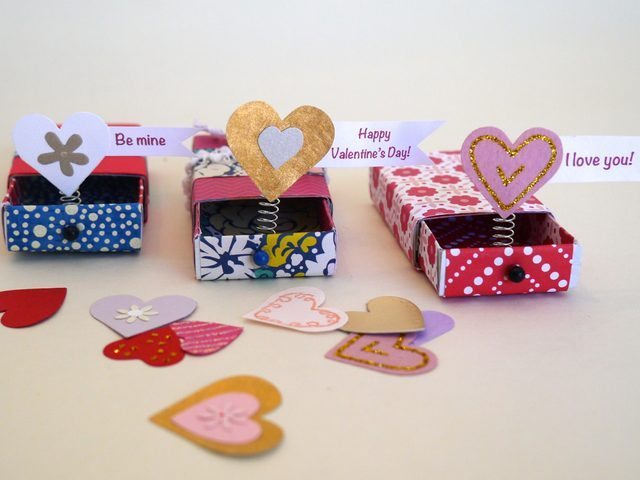
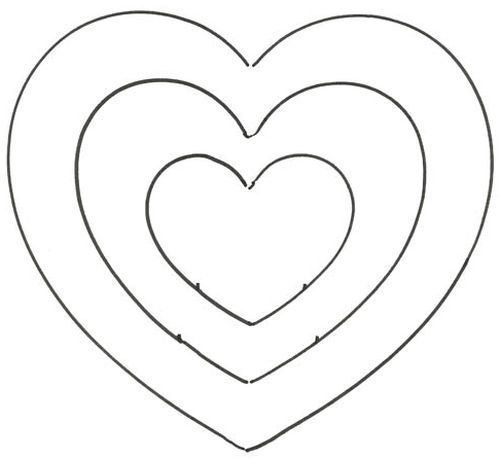
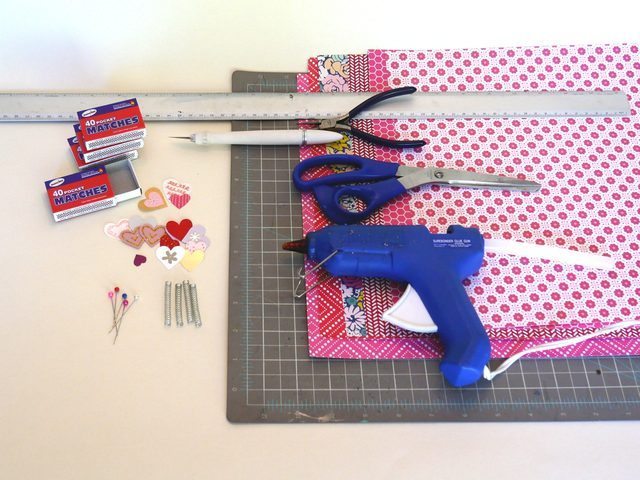 Measure the size of the inside of the matchbox and cut strips of paper.
Measure the size of the inside of the matchbox and cut strips of paper.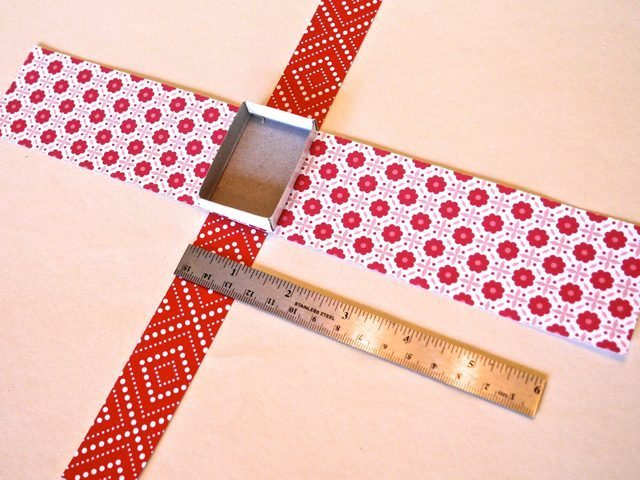 Coat the outside of the carton.
Coat the outside of the carton.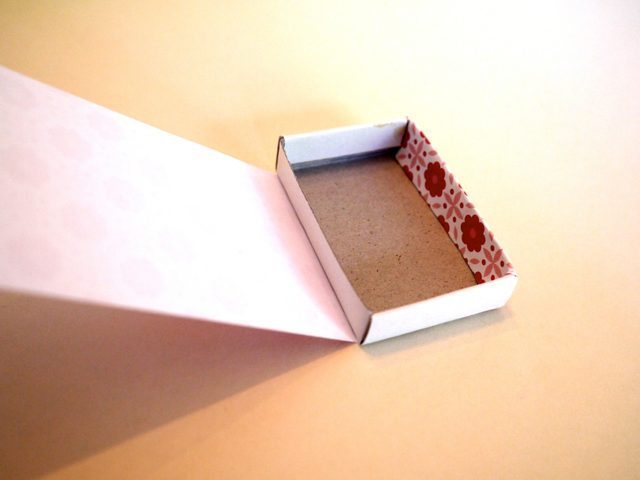 Cover the inside of the carton.
Cover the inside of the carton. Glue the smaller strip to the length of the carton.
Glue the smaller strip to the length of the carton.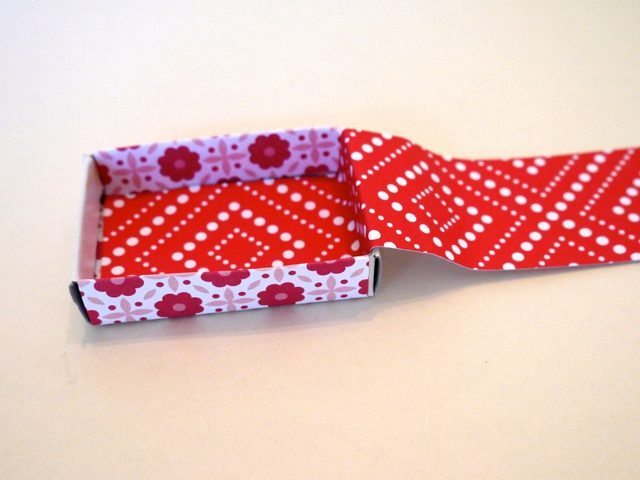 Remove the outside of the carton.
Remove the outside of the carton. Cover the outside of the box and reassemble it by gluing the flaps with the aid of the hot glue gun.
Cover the outside of the box and reassemble it by gluing the flaps with the aid of the hot glue gun. Cut one piece of the sewing pin through the end of the inside and fold the leftover pin inside to secure.
Cut one piece of the sewing pin through the end of the inside and fold the leftover pin inside to secure.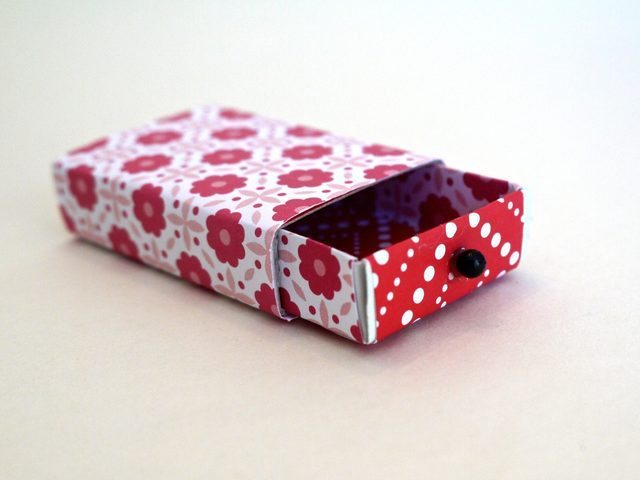
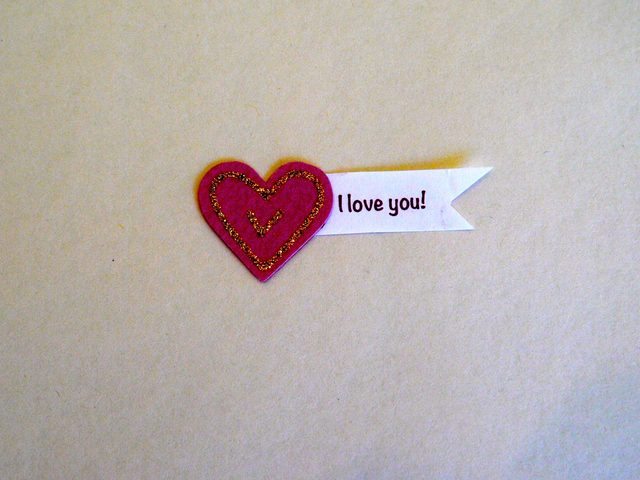 Cut a piece of the spring and glue it to the back of the heart with the aid of the hot glue gun.
Cut a piece of the spring and glue it to the back of the heart with the aid of the hot glue gun. To finish your piece, glue the spring into the matchbox. And it’s ready!
To finish your piece, glue the spring into the matchbox. And it’s ready!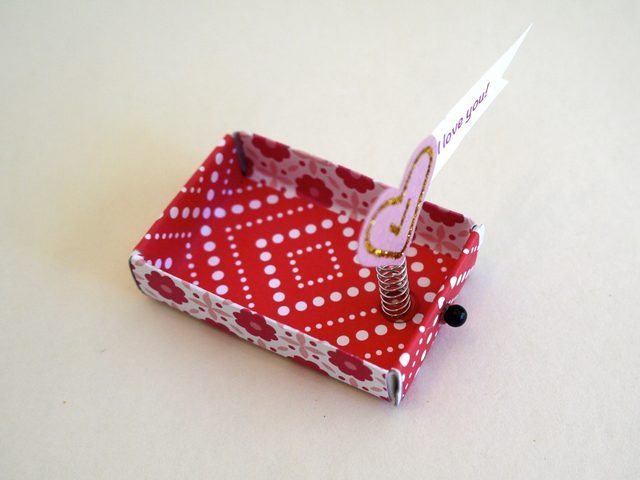
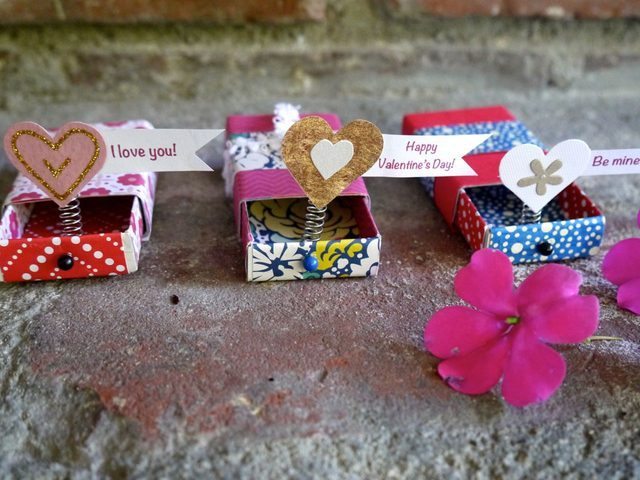 (Photo: ehow.com)
(Photo: ehow.com)
 Making the work piece. Tube 5 cm long.
Making the work piece. Tube 5 cm long. Glue the small details in the strip.
Glue the small details in the strip.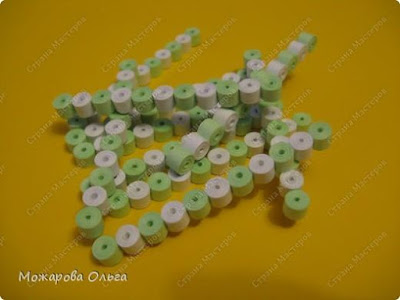 Glue them to the angular ducts.
Glue them to the angular ducts.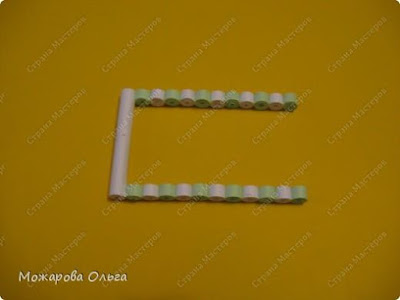 And there are 5 items.
And there are 5 items. Glue them together.
Glue them together.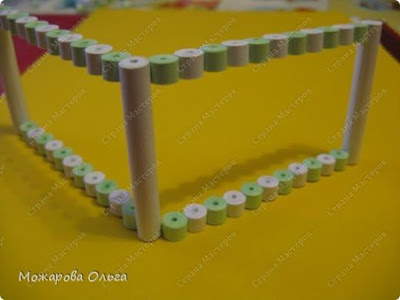 Get in shape in our boxes.
Get in shape in our boxes. The edges of the petals were light, I made here are blank.
The edges of the petals were light, I made here are blank. Then twisted details.
Then twisted details. Pasted them into the frame.
Pasted them into the frame.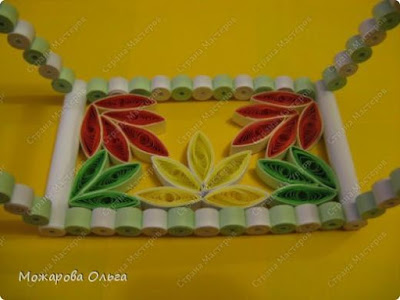 Thus, all the walls are filled.
Thus, all the walls are filled.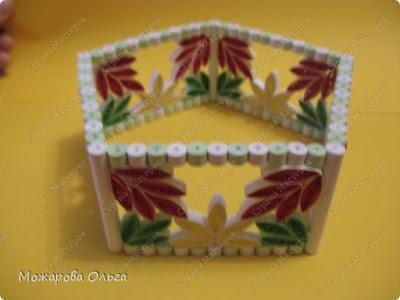 Fill the bottom.
Fill the bottom. This can be done as the bottom lid.
This can be done as the bottom lid.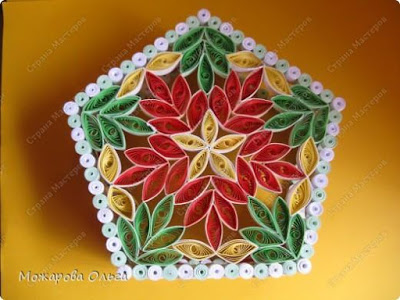 Do cover.
Do cover. Sticking the central part.
Sticking the central part.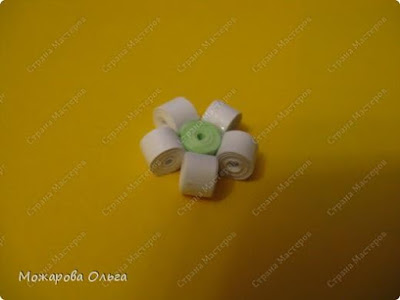 Combine with five ends of the work piece.
Combine with five ends of the work piece.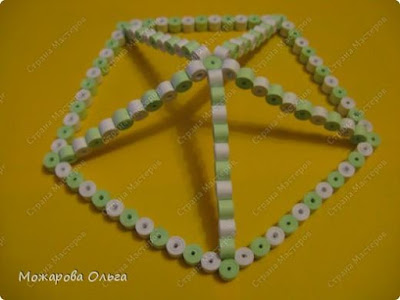 Thus glued corners.
Thus glued corners. Fill the cover.
Fill the cover.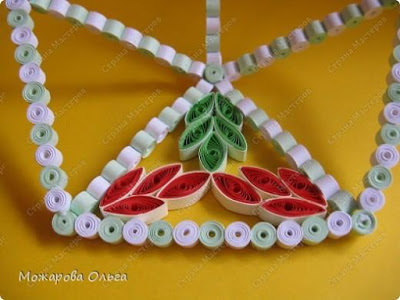
 Here’s what happened.
Here’s what happened.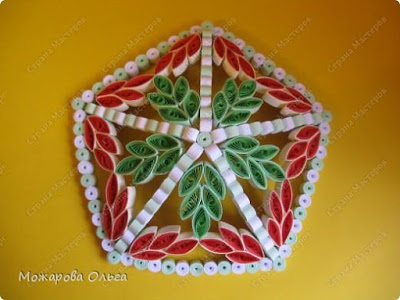 It remains to make a handle for the lid.
It remains to make a handle for the lid.
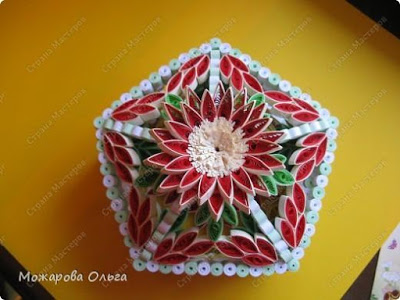

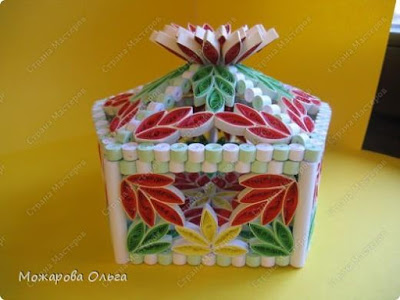

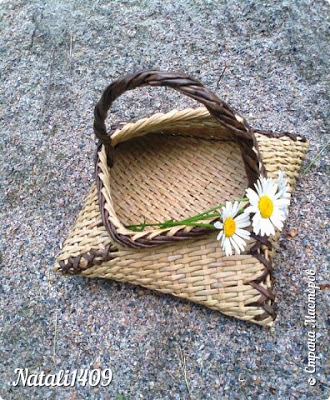
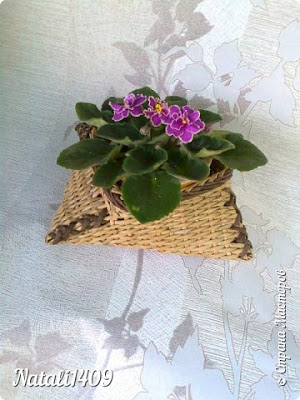

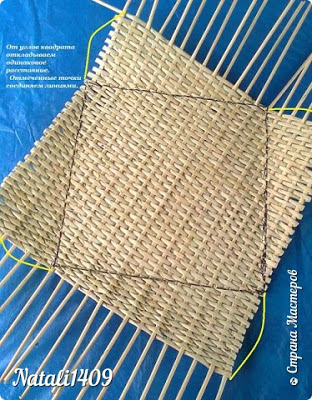
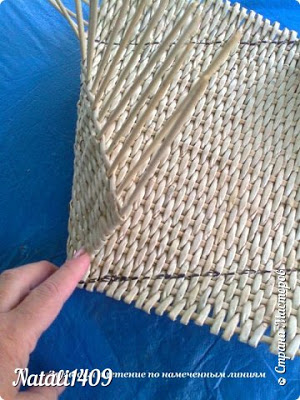

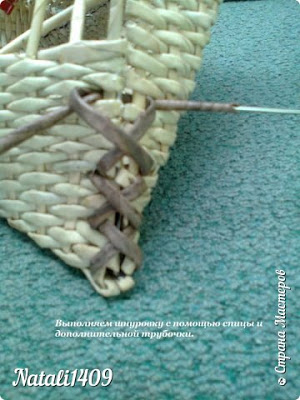
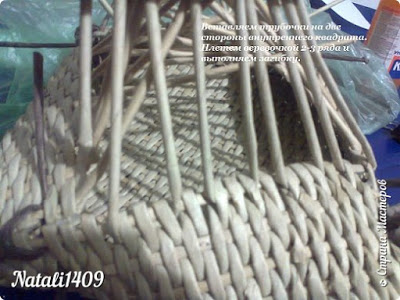
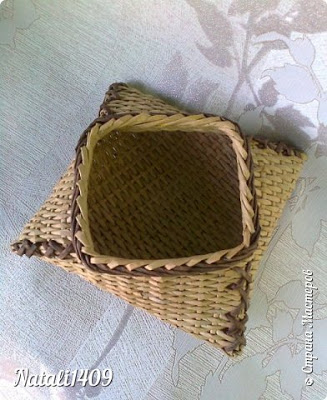
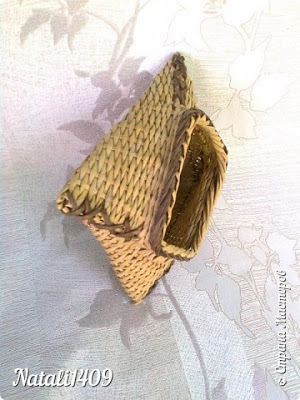

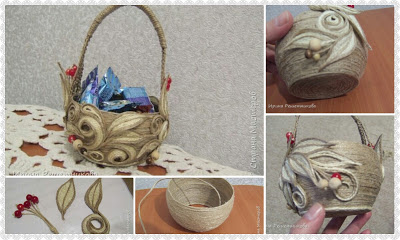


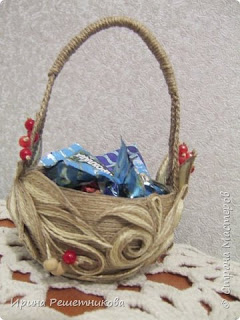

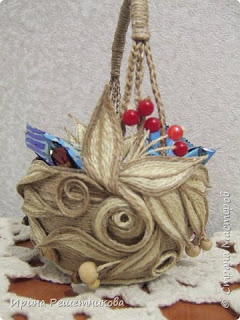

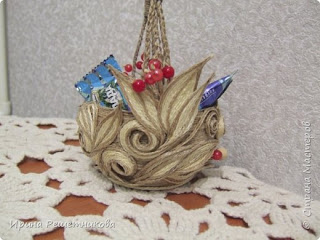

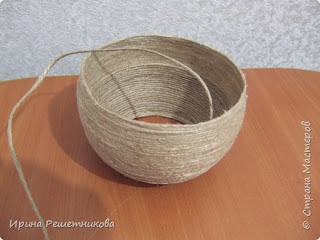
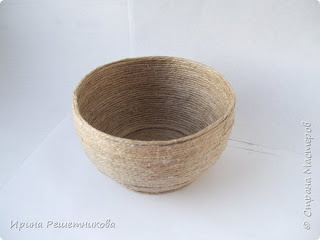
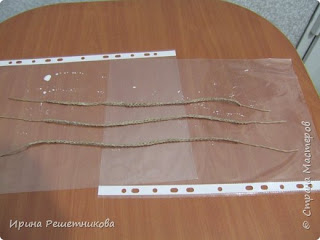

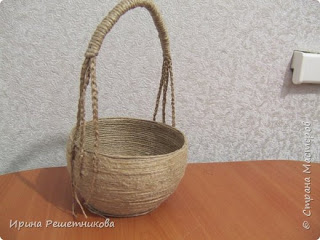
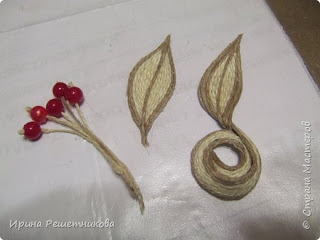

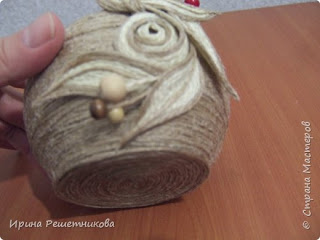
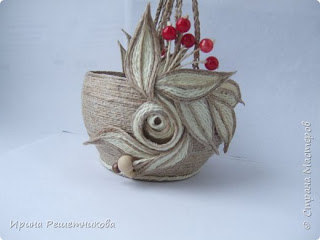
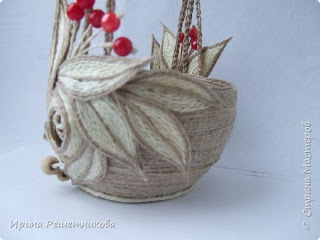
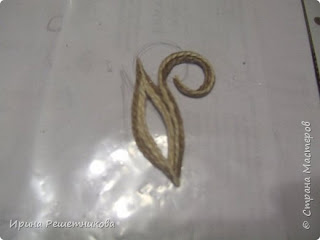
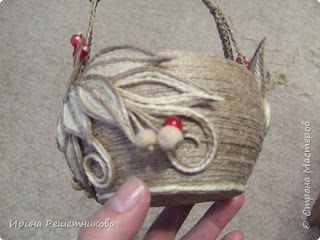

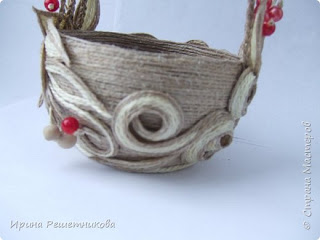
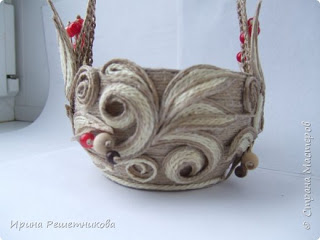
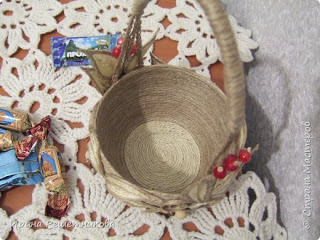
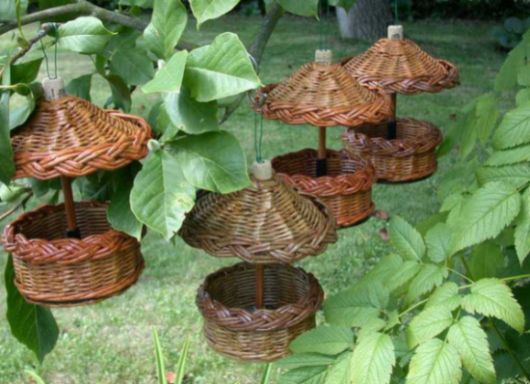
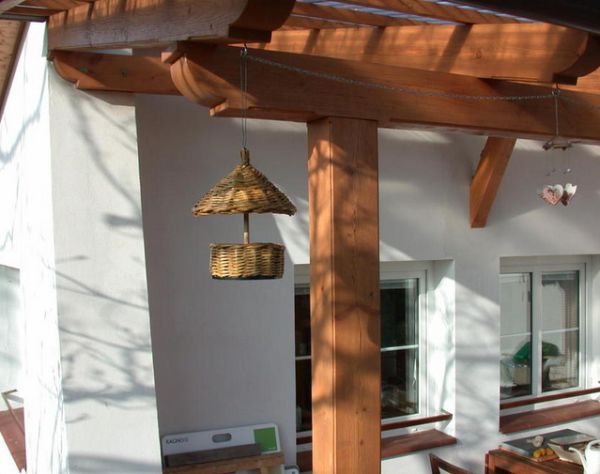 To make this beautiful piece you will need:
To make this beautiful piece you will need: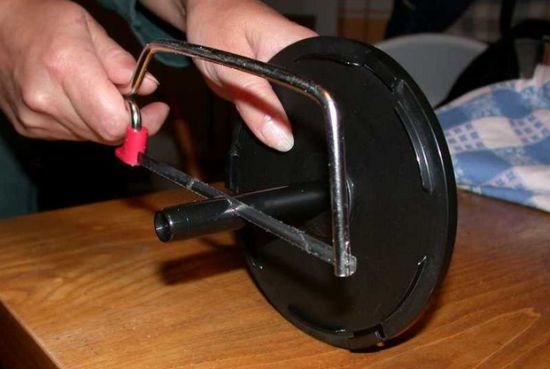
 Then, using the pliers, remove the spare edges of the CD case.
Then, using the pliers, remove the spare edges of the CD case.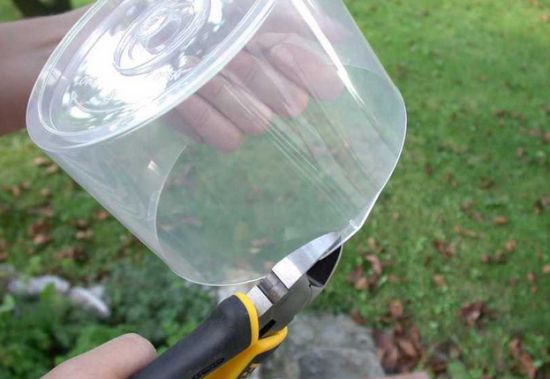 Now, position the large screw on the carton tube and screw the nut on the outside of the carton.
Now, position the large screw on the carton tube and screw the nut on the outside of the carton. Then make newspaper straws and position on the lid of the box forming double.
Then make newspaper straws and position on the lid of the box forming double. Soon after, trance other newspaper straws for the doubles previously achieved.
Soon after, trance other newspaper straws for the doubles previously achieved.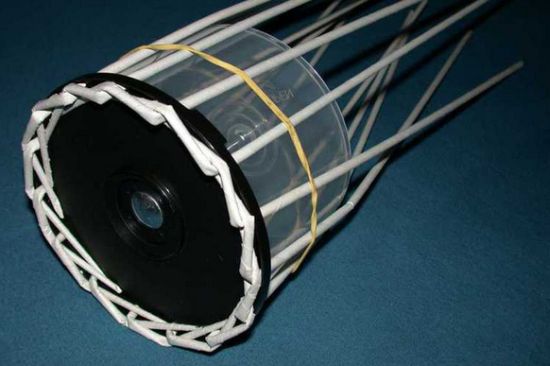 Now, with other newspaper straws, trance the body part of the feeder, using the CD box as a base.
Now, with other newspaper straws, trance the body part of the feeder, using the CD box as a base.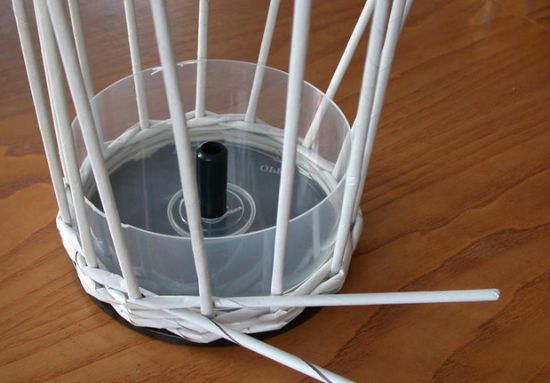 Then, remove the CD box and finish the newspaper straws at the edge.
Then, remove the CD box and finish the newspaper straws at the edge. Afterwards, make a very wide cone with the piece of cardboard, pasting the ends. Attach the cap of the pet bottle with the plastic nail on the tip of the cone. Position newspaper straws and trance these straws.
Afterwards, make a very wide cone with the piece of cardboard, pasting the ends. Attach the cap of the pet bottle with the plastic nail on the tip of the cone. Position newspaper straws and trance these straws.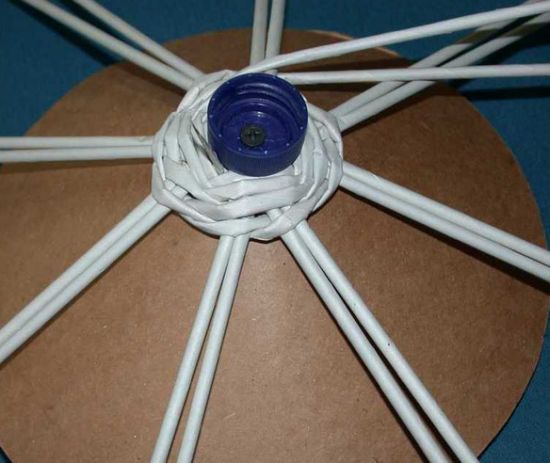 Now, trance up to the size you want and do the finishing on the edge.
Now, trance up to the size you want and do the finishing on the edge.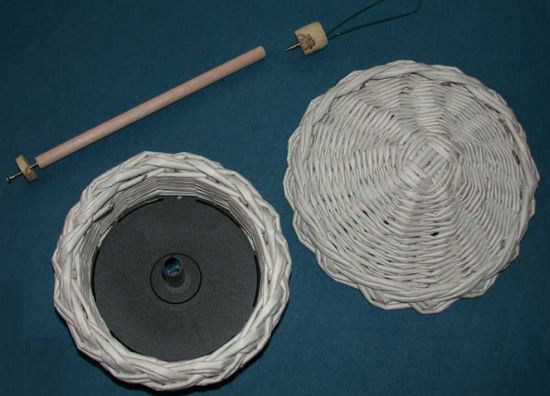 Then, secure the wooden cylinder with the smaller screws and the stopper on the top of the “roof” of the feeder.
Then, secure the wooden cylinder with the smaller screws and the stopper on the top of the “roof” of the feeder. Then, to finalize your piece, paint with your paintbrush and brown paint all its feeder and when the paint is dry, spray the spray varnish. And it’s ready! Now just put the cord and hang your feeder.
Then, to finalize your piece, paint with your paintbrush and brown paint all its feeder and when the paint is dry, spray the spray varnish. And it’s ready! Now just put the cord and hang your feeder.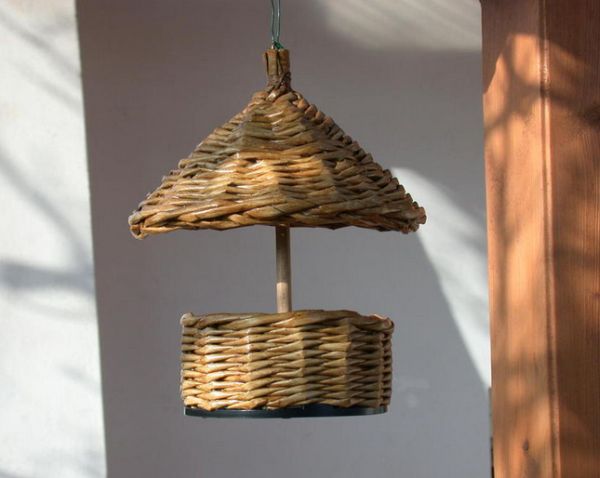 (Image Source: geteasyfreshideas.com)
(Image Source: geteasyfreshideas.com)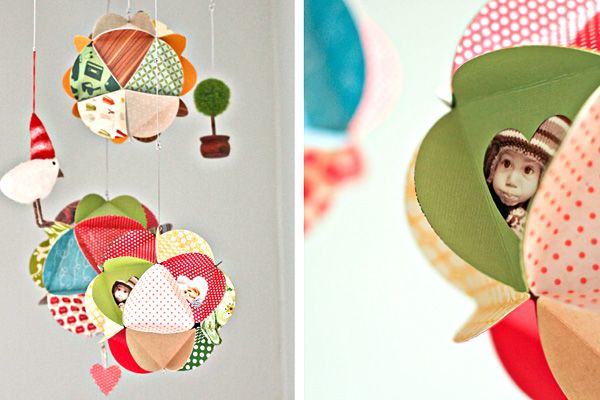
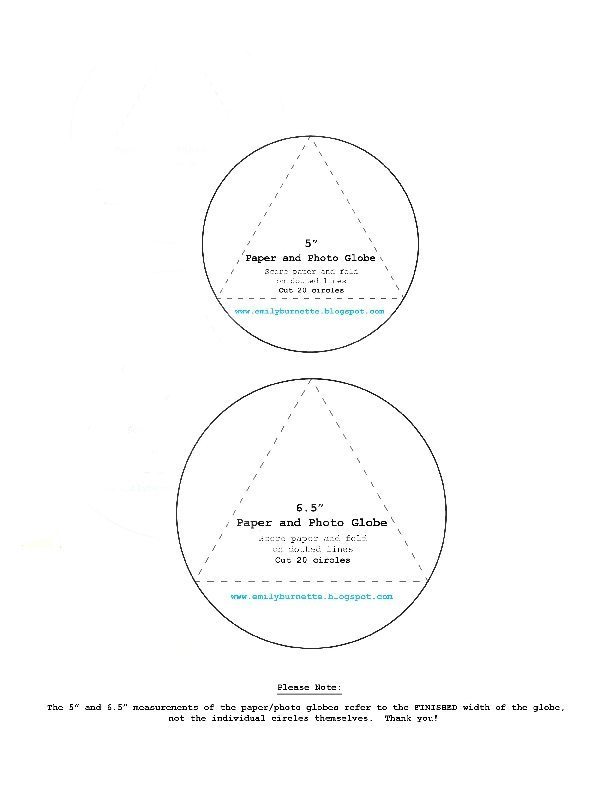 Start by separating all the materials you will use in your photo globe step by step .
Start by separating all the materials you will use in your photo globe step by step . Transfer the mold parts to the chosen structured papers. Cut out all marked parts.
Transfer the mold parts to the chosen structured papers. Cut out all marked parts. Glue all the central parts of the mold with the aid of a spatula or other object of your choice.
Glue all the central parts of the mold with the aid of a spatula or other object of your choice. Glue the photos inside each piece of structured paper, using double-sided adhesive tape, and in a very centralized way. If you want, you can crop around the photos in different formats, such as heart, star or letter format formats.
Glue the photos inside each piece of structured paper, using double-sided adhesive tape, and in a very centralized way. If you want, you can crop around the photos in different formats, such as heart, star or letter format formats. Glue one piece of paper to the other, alternately, creating a long strip.
Glue one piece of paper to the other, alternately, creating a long strip.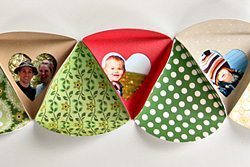 To finalize your piece, simply join the parts of the ends, forming a sphere, with the parts of the photos out. And it’s ready! You can also use only one color or a paper print to make this craft.
To finalize your piece, simply join the parts of the ends, forming a sphere, with the parts of the photos out. And it’s ready! You can also use only one color or a paper print to make this craft.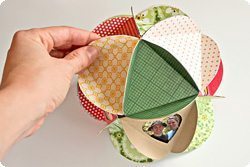 (Image Source: content.photojojo.com)
(Image Source: content.photojojo.com)
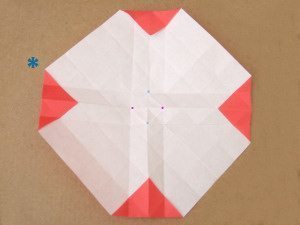 Fold the corner inside.
Fold the corner inside.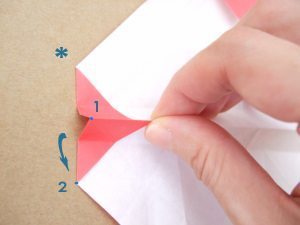 Win the song.
Win the song.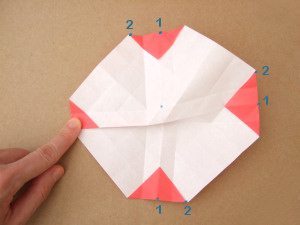 Do the same with the other songs.
Do the same with the other songs. Raise the center of the part.
Raise the center of the part. Also link the center.
Also link the center.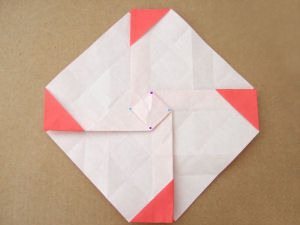 Part behind the piece.
Part behind the piece.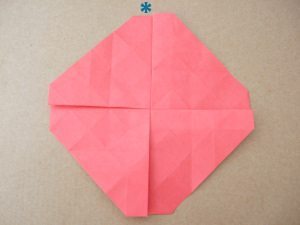 In one corner, take the center and some side folds.
In one corner, take the center and some side folds.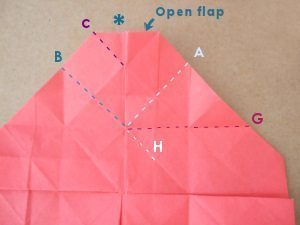
 Raise the other part.
Raise the other part.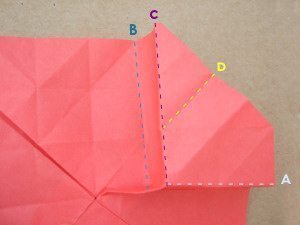 Do the same with all the songs.
Do the same with all the songs. Take the recessed part of one of the corners.
Take the recessed part of one of the corners.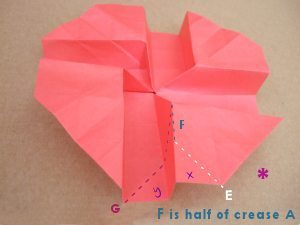 Fold this part.
Fold this part.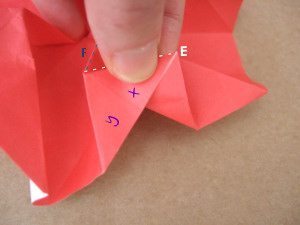 Tape the bent part.
Tape the bent part. Do the same with all the corners and “twist” the piece. Your rose is created. The leaves for your roses can have the template you want and you can glue the leaves at the base of your roses with the aid of ordinary white glue, double-sided tape or stick glue, depending on your preference for glue to work With paper.
Do the same with all the corners and “twist” the piece. Your rose is created. The leaves for your roses can have the template you want and you can glue the leaves at the base of your roses with the aid of ordinary white glue, double-sided tape or stick glue, depending on your preference for glue to work With paper. To make the button, fold another square of paper, but with smaller size, wring the sides, raise the center and twist.
To make the button, fold another square of paper, but with smaller size, wring the sides, raise the center and twist.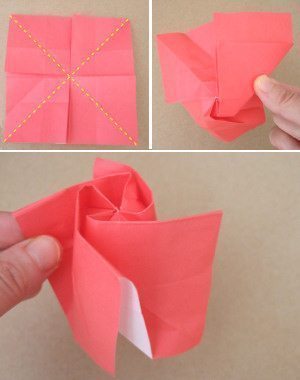
 (Photo: bloomize.com)
(Photo: bloomize.com)